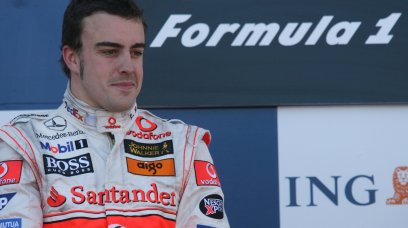The verdict of Aston Martin's protest following Carlos Sainz's Q2 crash in qualifying for the Chinese Grand Prix is in.
Sainz lost control of his Ferrari coming out of the final corner of the Shanghai International Circuit mid-way through Q2.
His car slid across the track having dipped a wheel into the gravel, hitting the opposite barrier and bringing out the red flag as it came to a stop.
However, despite getting going again and nursing the car back to pits, Aston Martin lodged a protest of the results of qualifying as Ferrari were able to fix the damage, and Sainz successfully got through the session - at Lance Stroll's expense, with the Canadian driver qualifying in P11 whilst Sainz would go on to set the seventh-fastest lap time in Q3.
The Silverstone-based team's grounds for doing so were based on Article 39.6 of the sporting regulations, which states that: "Any driver whose car stops on the track during the qualifying session or the sprint shootout will not be permitted to take any further part in that session."
As race direction noted Sainz as having stopped on circuit, Aston Martin feel the above clause was breached, despite the Ferrari being able to return to the garage unaided and the rule often considered to relate to when a car cannot get back to the pits under its own steam.
Viewed by others:
The verdict
Following Aston Martin's protest to the FIA, it was deemed that the evidence was not enough to uphold the protest, thus dismissing the case.
In the decision document, the stewards stated: "It is clear that the plain language of Art. 39.6 suggests that so long as a car “stops” on the track during a qualifying session, that car should not be permitted to take further part in the session."
However, it also said: "However, it was clear from the examples cited by a number of the team managers present and the FIA, that this was not how this rule was applied by the teams and the FIA in the past."
According to the document: "In the FIA’s view, what was crucial was that the car would not receive any outside assistance in order to restart (e.g. from marshals)."
It also being made clear Aston Martin "accepted that there were prior examples of cars stopping on track and being allowed to continue, despite the plain wording of Article.39.6. However, they felt that stopping, in this case, for 1minute and 17 seconds was too long and therefore should not have been permitted."
Ultimately, the stewards concluded: "Taking into account the numerous examples where cars had stopped for different lengths of time and were permitted to restart and continue to participate in the session concerned, we considered that the decision taken by Race Control was not inconsistent with past practice nor in breach of Article 39.6."
The rule dictating a car that has triggered a red flag cannot take further part in a session is currently being trialled in F2 and FIA F3. However, it has not been considered grounds for an appeal in F1 in the past.
Don't miss out on any of the Formula 1 action thanks to this handy 2026 F1 calendar that can be easily loaded into your smartphone or PC.
Download the calenderMost read
In this article













Join the conversation!